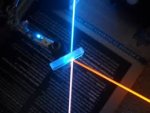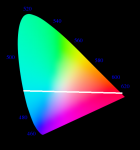Welcome back--long time no see. LPF needs returning members along with good new ones----so many noobs, trolls, and spammers recently --is a breath of fresh air to see a returning member
+rep when I can
You can mix wavelengths to get various visual color effects but they do not create any new wavelengths nor conventional full spectrum "white"---white created still remains the wavelengths used-- if you split the created "white" apart with a prism you get the wavelengths used to create the illusion of white.
Keep in mind--Color is not a physical property; it is merely the brain’s interpretation of different wavelengths of light. Color names are words/symbols for that brain activity.
I don't think there is any chance XPL will do anything other than what they do--the mass produce low quality lasers and their combining lasers are pretty poor quality examples--flawless combining of 2 beams each with the exact same divergence and so on is not easy to do--is a complicated manipulation of things-- more so the closer you get to ideal--especially in a hand held is probably not really possible other than OK/good enough for whatever purpose.
Very close but not perfect is the low cost mini RGB module 400mW for $399 from OPTLasers see:
https://optlasers.com/en/28-rgb-modules
ArticDude made a nice hand held out of the OPTLAsers module that pretty well. See:
https://laserpointerforums.com/f44/arctic-s-open-source-rgb-laser-host-99595.html






